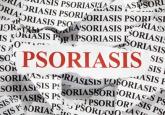Blog

Biosimilar Dilemma
The passage of the Biologics Price Competition and Innovation Act of 2009 (BPCI Act) allowed for the creation of a regulatory pathway for new,...
Ms. Kellen is from Weill Cornell Medical College, New York, New York. Dr. Goldenberg is from the Department of Dermatology, Icahn School of Medicine at Mount Sinai, New York, New York.
Ms. Kellen reports no conflict of interest. Dr. Goldenberg is a consultant for AbbVie Inc; Amgen Inc; Celgene Corporation; Eli Lilly and Company; Janssen Biotech, Inc; Novartis; and Sun Pharmaceutical Industries Ltd. He also is a speaker for AbbVie Inc; Celgene Corporation; Eli Lilly and Company; and Novartis.
Correspondence: Gary Goldenberg, MD, 5 E 98th St, 5th Floor, New York, NY 10029 (garygoldenbergmd@gmail.com).

As patents for the biologic agents reach their expiration dates, dermatologists must prepare for the coming of biosimilars. These agents have been deemed “highly similar” to their reference products in a process outlined by the US Food and Drug Administration (FDA). In 2016, the FDA approved 3 biosimilars for various indications including plaque psoriasis and psoriatic arthritis. However, biosimilars are not the same as small-molecule generics because they have a complex manufacturing process that makes it impossible to produce identical products to their reference products. Therefore, should biosimilars be granted FDA approval for the same indications as their reference products? Furthermore, can biosimilars automatically be substituted for the branded drug at the pharmacy level? Putting aside these technical concerns, physicians must focus on the impact of biosimilars on patient care. These agents will have to be integrated into a complex health care system comprised of drug developers, employers, payers, and drug formularies.
Practice Points
According to the US Food and Drug Administration (FDA), a biosimilar is “highly similar to an FDA-approved biological product, . . . and has no clinically meaningful differences in terms of safety and effectiveness.”1 The Biologics Price Competition and Innovation (BPCI) Act of 2009 created an expedited pathway for the approval of products shown to be biosimilar to FDA-licensed reference products.2 In 2013, the European Medicines Agency approved the first biosimilar modeled on infliximab (Remsima [formerly known as CT-P13], Celltrion Healthcare Co, Ltd) for the same indications as its reference product.3 In 2016, the FDA approved Inflectra (Hospira, a Pfizer Company), an infliximab biosimilar; Erelzi (Sandoz, a Novartis Division), an etanercept biosimilar; and Amjevita (Amgen Inc), an adalimumab biosimilar, all for numerous clinical indications including plaque psoriasis and psoriatic arthritis.4-6
There has been a substantial amount of distrust surrounding the biosimilars; however, as the patents for the biologic agents expire, new biosimilars will undoubtedly flood the market. In this article, we provide information that will help dermatologists understand the need for and use of these agents.
Small-molecule generics can be made in a process that is relatively inexpensive, reproducible, and able to yield identical products with each lot.7 In contrast, biosimilars are large complex proteins made in living cells. They differ from their reference product because of changes that occur during manufacturing (eg, purification system, posttranslational modifications).7-9 Glycosylation is particularly sensitive to manufacturing and can affect the immunogenicity of the product.9 The impact of manufacturing can be substantial; for example, during phase 3 trials for efalizumab, a change in the manufacturing facility affected pharmacokinetic properties to such a degree that the FDA required a repeat of the trials.10
The FDA outlines the following approach to demonstrate biosimilarity.2 The first step is structural characterization to evaluate the primary, secondary, tertiary, and quaternary structures and posttranslational modifications. The next step utilizes in vivo and/or in vitro functional assays to compare the biosimilar and reference product. The third step is a focus on toxicity and immunogenicity. The fourth step involves clinical studies to study pharmacokinetic and pharmacodynamic data, immunogenicity, safety, and efficacy. After the biosimilar has been approved, there must be a system in place to monitor postmarketing safety. If a biosimilar is tested in one patient population (eg, patients with plaque psoriasis), a request can be made to approve the drug for all the conditions that the reference product was approved for, such as plaque psoriasis, rheumatoid arthritis, and inflammatory bowel disease, even though clinical trials were not performed in all of these patient populations.2 The BPCI Act leaves it up to the FDA to determine how much and what type of data (eg, in vitro, in vivo, clinical) are required.11
Once a biosimilar has been approved, 2 questions must be answered: First, can its use be extrapolated to all indications for the reference product? The infliximab biosimilar approved by the European Medicines Agency and the FDA had only been studied in patients with ankylosing spondylitis12 and rheumatoid arthritis,13 yet it was granted all the indications for infliximab, including severe plaque psoriasis.14 As of now, the various regulatory agencies differ on their policies regarding extrapolation. Extrapolation is not automatically bestowed on a biosimilar in the United States but can be requested by the manufacturer.2
Second, can the biosimilar be seamlessly switched with its reference product at the pharmacy level? The BPCI Act allows for the substitution of biosimilars that are deemed interchangeable without notifying the provider, yet individual states ultimately can pass laws regarding this issue.15,16 An interchangeable agent would “produce the same clinical result as the reference product,” and “the risk in terms of safety or diminished efficacy of alternating or switching between use of the biological product and the reference product is not greater than the risk of using the reference product.”15 Generic drugs are allowed to be substituted without notifying the patient or prescriber16; however, biosimilars that are not deemed interchangeable would require permission from the prescriber before substitution.11

The passage of the Biologics Price Competition and Innovation Act of 2009 (BPCI Act) allowed for the creation of a regulatory pathway for new,...

Biologic treatments have revolutionized the management of psoriasis and psoriatic arthritis (PsA). Anti–tumor necrosis factor (TNF) α monoclonal...

The therapeutic armamentarium for patients with psoriasis and psoriatic arthritis (PsA) has been strengthened by research affording more...
